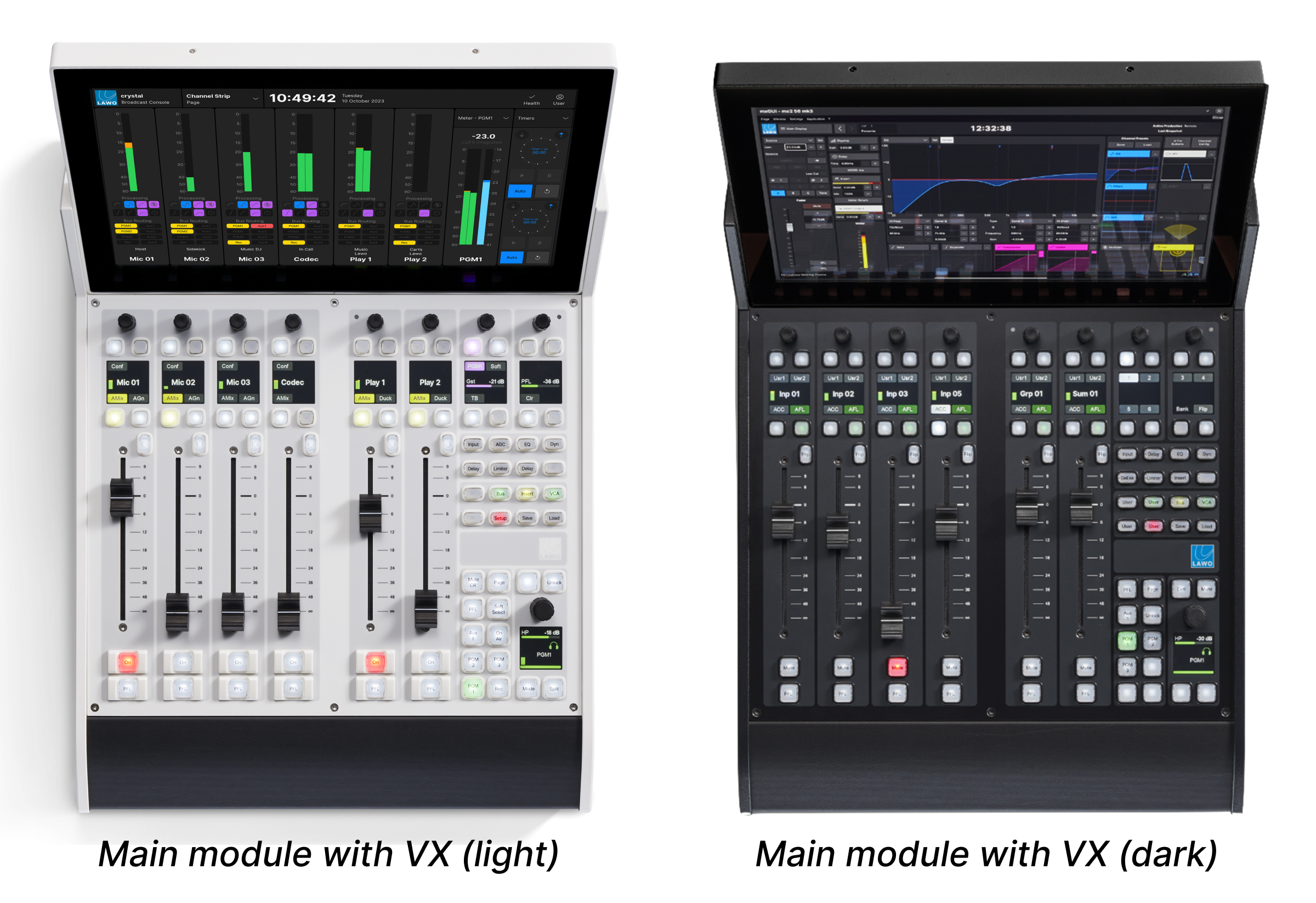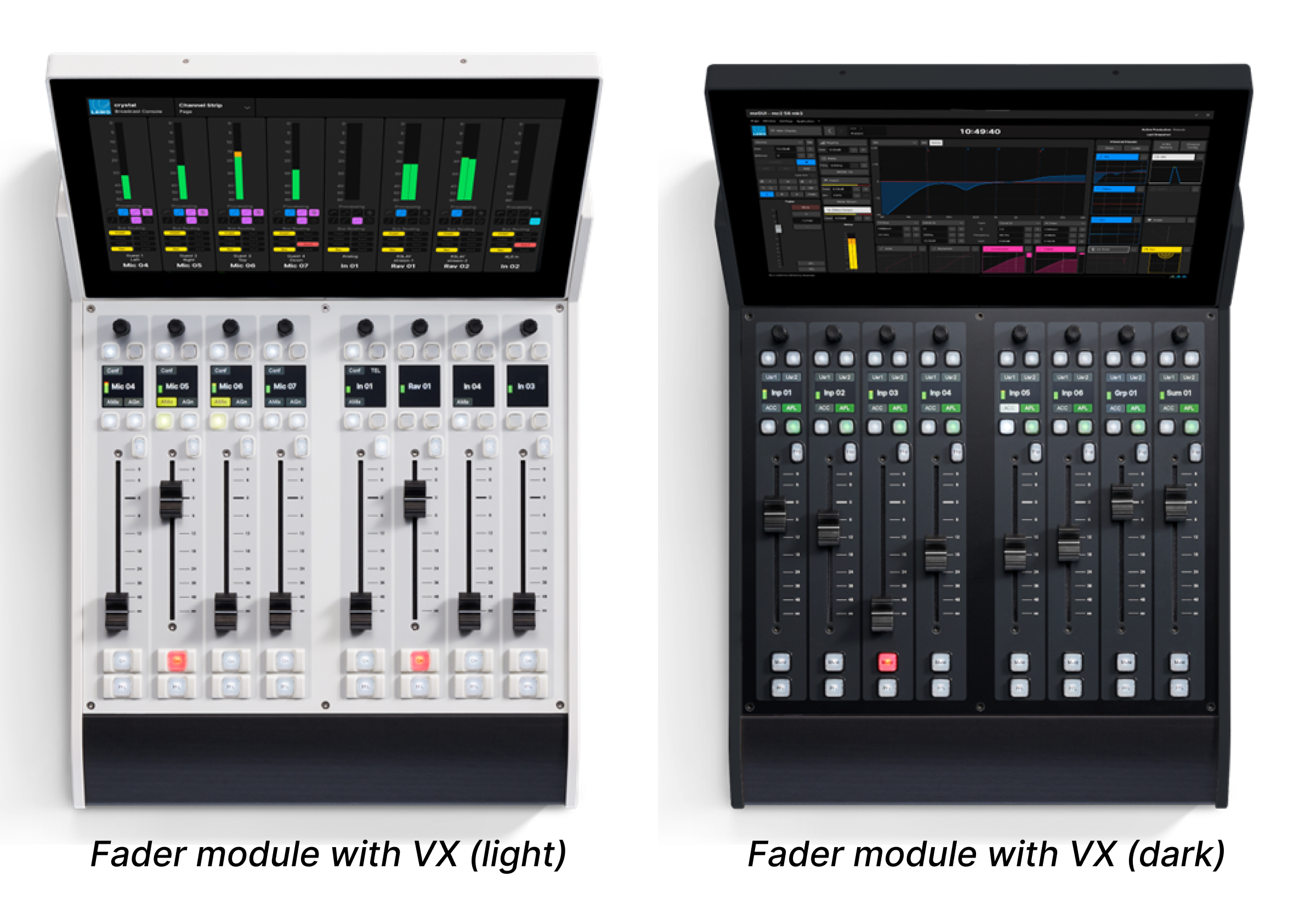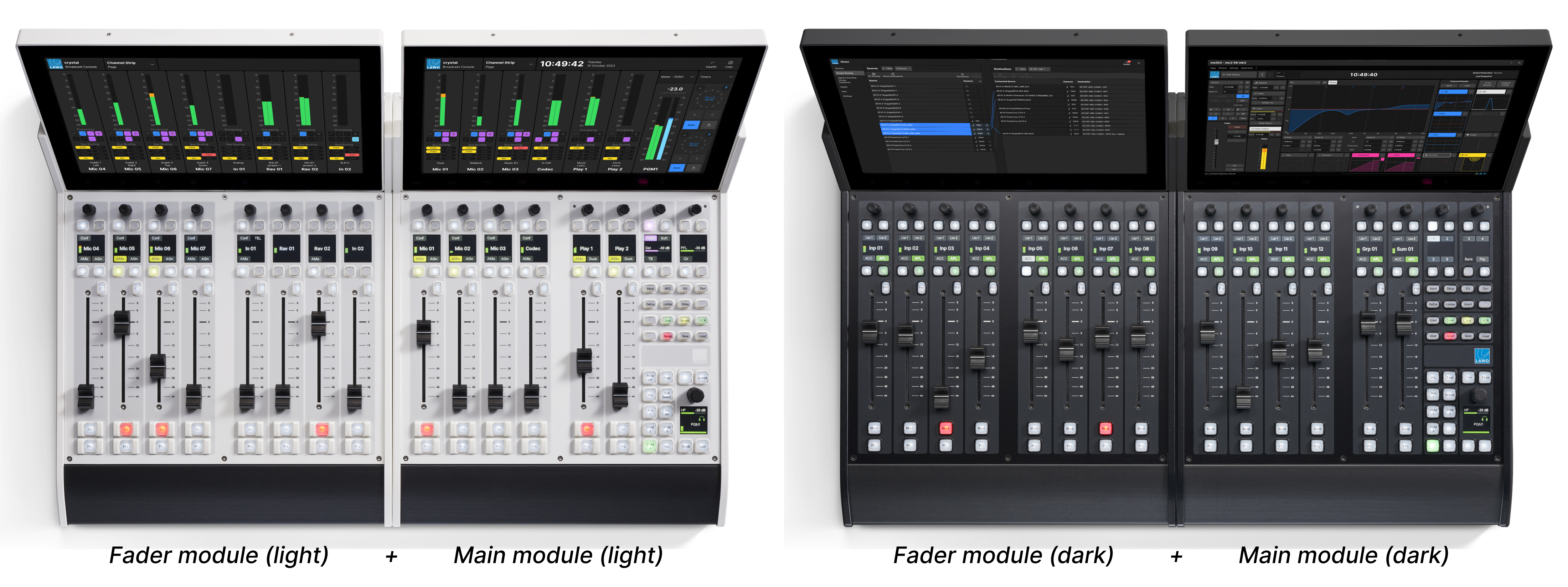crystal - Surface Configurations
This topic describes the configuration rules that apply to the crystal surface.
Considerations
crystal support two exclusive modes of operation: either Power Core or Open Sound Controller (OSC) mode.
Power Core Licensing
To operate with Power Core, the system requires one of two licenses: either Console Compact or Console Max.
The Console Compact license supports the following configurations:
- 1x 6-fader crystal (single frame)
- 1x 8-fader crystal (single frame)
- 1x 14-fader crystal (in split-frames).
If a Console Max license is installed, then up to four crystal surfaces can share the resources of a single Power Core device. In this instance, the following configurations are supported:
- 4x 6-fader crystal (single frames).
- 3x 14-fader crystal (in split-frames) + 1x 6-fader crystal (single frame).
- any combination in-between, including virtual interfaces.
Important: all of the physical surfaces must be the same type: all crystal, all diamond or all ruby. You cannot connect different surface types to a single Power Core MAX device.
Controller Mode
If a crystal frame runs as an OSC controller, then it can communicate with an external OSC device such as a DAW. In this instance, more than one frame can be combined (to fit the OSC application).
Important: Power Core cannot be controlled as an OSC device.
Cabling
If the surface comprises more than one frame, then it is important to consider the cabling options for the additional frame(s).
To connect the surface to Power Core, there are two possibilities:
- Connect one frame to Power Core via IP, and then daisy-chain the second frame to the first (using an external CAN bus cable),
- Or, connect each frame individually to Power Core via IP.
In controller mode, each frame must connect to the IP network; a CAN bus daisy-chain is not supported.
Frame Type
In each case, the frame(s) are available in light or dark; tabletop or countersunk; and with or without the VX integration.
Please note:
- The frame construction (finish, mounting and VX) must be specified at the time of order; there is no possibility to convert the frame later.
- The Main and Fader modules are a standard size, and so these can be exchanged later if required.
- Each frame accepts either a Main or Fader module. To fit a VX module, the Virtual Extension integration must be specified.
- Each frame must be populated; there are no blanking panels.
Surface Configurations (no VX)
The following configurations are possible for a surface with physical controls only (and no touch-screen integration).
6-fader crystal (light and dark)
The 6-fader surface comprises a single frame fitted with 1x Main module.

8-fader crystal (light and dark)
The 8-fader surface comprises a single frame fitted with 1x Fader module.

14-fader crystal (light and dark)
The 14-fader surface comprises two frames with 1x Main module and 1x Fader module.

16-fader crystal and upwards
The largest surface supported by Power Core is the 14-faders (as described above).
In controller mode, it is possible to build a larger surface using a mixture of Main and/or Fader module frames (e.g. 3x Fader module frames for 24 faders).
Surface Configurations (with VX)
The same fader configurations are then possible, but with the touch-screen (VX) integration.
The rules for combining frames are identical and so here we show the images only. Remember that the largest variant supported by Power Core is 14 faders.
6-fader crystal with VX (light and dark)

8-fader crystal with VX (light and dark)

14-fader crystal with VX (light and dark)
